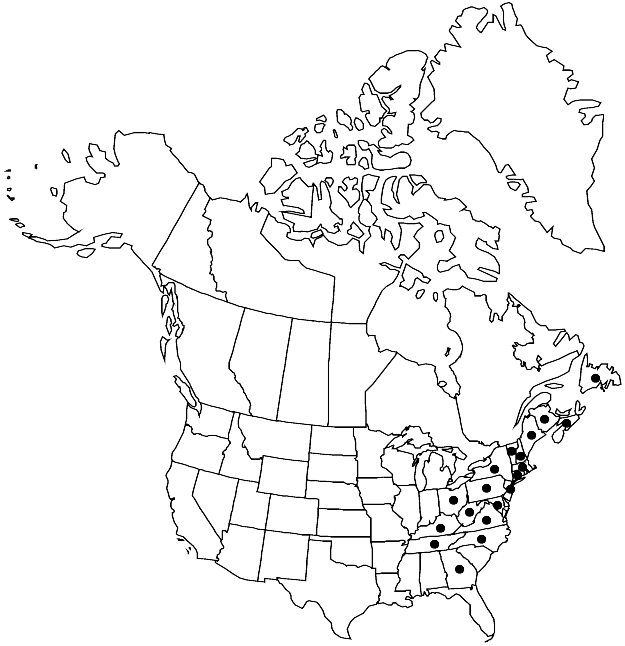Loeskeobryum brevirostre
in H. G. A. Engler et al., Nat. Pflanzenfam. ed. 2, 11: 483. 1925.
Plants to 12 cm. Stem leaves slightly concave, (1.1–)1.4–1.9 mm wide; margins often broadly incurved at base of acumen; apex frequently falcate, acumen slender, slightly channeled; medial laminal cells 30–70 × 5–7 µm; cells of clasping auricles smaller, rectangular to rhomboidal. Branch leaves spreading, concave, 0.8–1.9 × 0.3–1.2 mm; base slightly or not cordate-clasping; apex acuminate to abruptly acute, straight. Seta 1.2–4 cm. Capsule ellipsoid, neck short, 1.6–2.7 mm.
Habitat: Soil, humus, rotten logs, and rock in moist forests, especially common in mixed hemlock and cove hardwood forests of Appalachian Mountains
Elevation: low to high elevations (0-2000 m)
Distribution

N.B., Nfld. and Labr. (Nfld.), N.S., Conn., Ga., Ky., Maine, Md., Mass., N.H., N.J., N.Y., N.C., Ohio, Pa., Tenn., Vt., Va., W.Va., Mexico, West Indies, Central America (Costa Rica, Guatemala), Europe, n Africa.
Discussion
Reports of Loeskeobryum brevirostre from Ontario and Quebec have not been confirmed. The collection by Macoun from Owen Sound (1191, 28 July 1871, CANM) is correctly identified but far from the Appalachian range of the species. All Quebec collections labeled as L. brevirostre examined for this study were misidentified.
Selected References
None.
